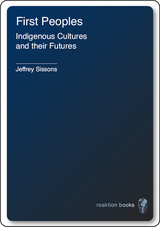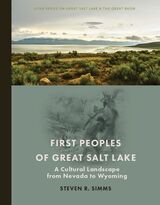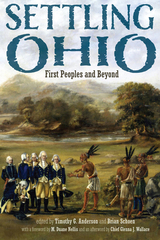
From the Big-Game Hunters who appeared on the continent as far back as 12,000 years ago to the Inuits plying the Alaskan waters today, the Native peoples of North America produced a culture remarkable for its vibrancy, breadth, and diversity--and for its survival in the face of almost inconceivable trials. This book is at once a history of that culture and a celebration of its splendid variety. Rich in historical testimony and anecdotes and lavishly illustrated, it weaves a magnificent tapestry of Native American life reaching back to the earliest human records.
A recognized expert in North American studies, Jonathan King interweaves his account with Native histories, from the arrival of the first Native Americans by way of what is now Alaska to their later encounters with Europeans on the continent's opposite coast, from their exchanges with fur traders to their confrontations with settlers and an ever more voracious American government. To illustrate this history, King draws on the extensive collections of the British Museum--artwork, clothing, tools, and artifacts that demonstrate the wealth of ancient traditions as well as the vitality of contemporary Native culture. These illustrations, all described in detail, form a pictorial document of relations between Europeans and Native American peoples--peoples as profoundly different and as deeply related as the Algonquians and the Iroquois, the Chumash of California and the Inuipat of Alaska, the Cree and the Cherokee--from their first contact to their complicated coexistence today.

First Peoples explores how, instead of being absorbed into a homogeneous modernity, indigenous cultures are actively shaping alternative futures for themselves and appropriating global resources for their own culturally specific needs. From the Inuit and Saami in the north to the Maori and Aboriginal Australians in the south to the American Indians in the west, Sissons shows that for indigenous peoples, culture is more than simply heritage-it is a continuous project of preservation and revival.
Sissons argues that the cultural renaissances that occurred among indigenous peoples during the late twentieth century were not simply one-time occurrences; instead, they are crucial events that affirmed their cultures and re-established them as viable political entities posing unique challenges to states and their bureaucracies. He explores how indigenous peoples have also defined their identities through forged alliances such as the World Council of Indigenous Peoples and how these allied communities have created an alternative political order to the global organization of states.
First Peoples is a groundbreaking volume that vigorously contends that indigenous peoples have begun a new movement to solve the economic and political issues facing their communities, and they are doing so in unique and innovative ways.

Great Salt Lake is a celebrated, world-recognized natural landmark. It, and the broader region bound to it, is also a thoroughly cultural landscape; generations of peoples made their lives there. In an eminently readable narrative, Steven Simms, one of the foremost archaeologists of the region, traces the scope of human history dating from the Pleistocene, when First Peoples interacted with the lapping waters of Lake Bonneville, to nearly the present day. Through vivid descriptions of how people lived, migrated, and mingled, with persistence and resilience, Simms honors the long human presence on the landscape.
First Peoples of Great Salt Lake takes a different approach to understanding the ancients than is typical of archaeology. De-emphasizing categories and labels, it traces changing environments, climates, and peoples through the notion of place. It challenges the "Pristine Myth," the cultural bias that Indigenous peoples were timeless, changeless, primitive, and the landscapes they lived in sparsely populated and perpetually pristine. First Peoples and their descendants modified the forests and understory vegetation, shaped wildlife populations, and adapted to long-term climate change. Native Americans of Great Salt Lake were very much part of their world, and the story here is one of long continuity through dramatic cultural change.

READERS
Browse our collection.
PUBLISHERS
See BiblioVault's publisher services.
STUDENT SERVICES
Files for college accessibility offices.
UChicago Accessibility Resources
home | accessibility | search | about | contact us
BiblioVault ® 2001 - 2024
The University of Chicago Press









